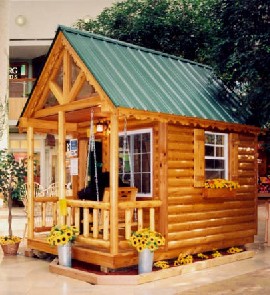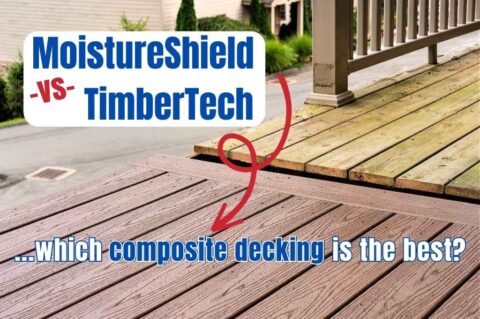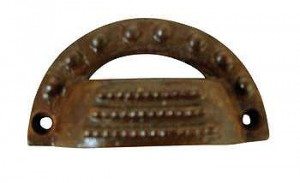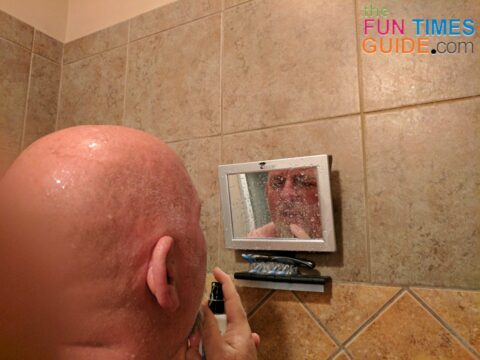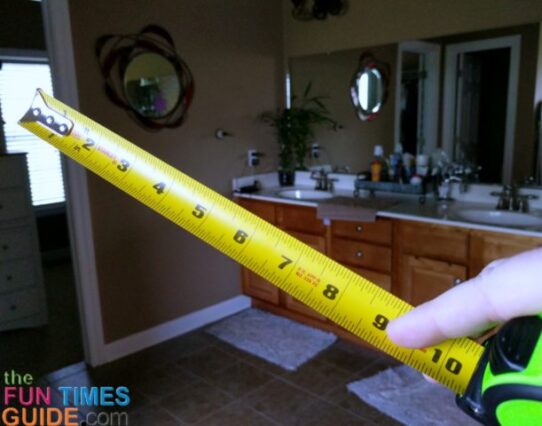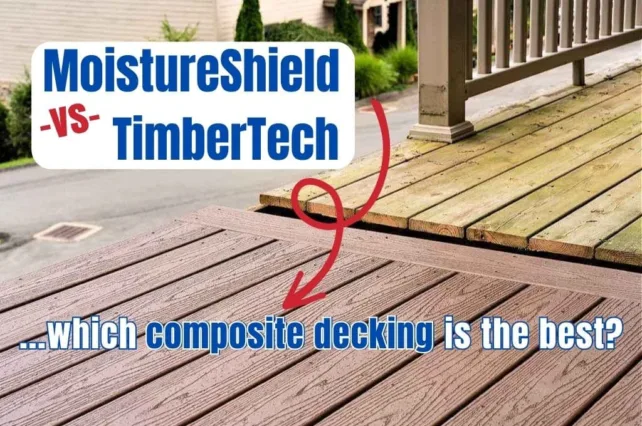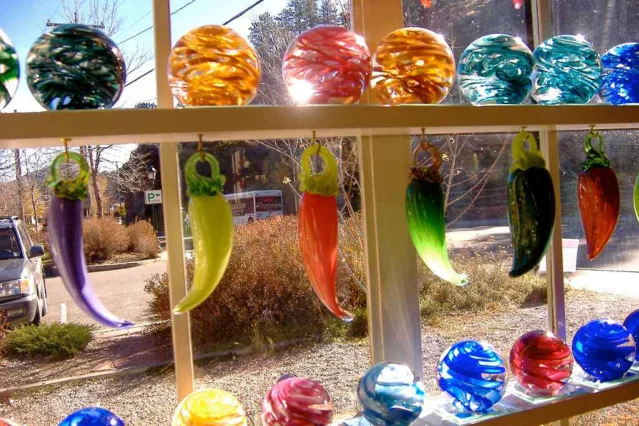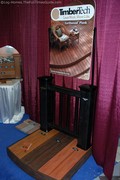 I have met with reps from TimberTech several times now. And they’ve been wonderful at answering my many questions. I still have a few more… as you can see below.
I have met with reps from TimberTech several times now. And they’ve been wonderful at answering my many questions. I still have a few more… as you can see below.
At this point, I’m leaning heavily toward TimberTech as my composite deck company of choice. (Though I have to say… MoistureShield is a very close second.)
Specifically, I am most intrigued by the Earthwood line, due to its realistic “wood” colors and the degree to which it looks natural even after weathering.
As I see it, here are a few of the things that set TimberTech apart from other composite deck companies…
1) shape of the planks (underneath)
2) design (or embossing) on the planks’ surface
2) color choices
3) fasteners
4) natural looking… like real wood
TimberTech’s Planks
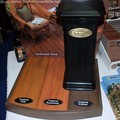 At TimberTech, they have 2 different types of deck planks, each shaped differently to best utilize 2 different types of fasteners.
At TimberTech, they have 2 different types of deck planks, each shaped differently to best utilize 2 different types of fasteners.
One is a tongue & groove type of plank, with the screws being adhered down at an angle. The screws themselves are not seen once the deck is completed, because the next plank covers the last screw.
The deck planks for this type of tongue & groove option are much thinner — almost hollowed out to give the effect of very deep “channels” along the entire bottom side of the board. According to TimberTech, this type of plank must remain 12 inches off the ground, in order to allow for enough ventilation around the boards at all times — mostly because the tongue & groove effect (which makes for easier installation) literally closes the gaps between the boards. Therefore, with this type of plank, air must circulate over and under the boards, rather than through them.
The other type of plank available at TimberTech is a solid core composite — much like the original planks that most composite deck companies started with. This type of plank is secured into place using “gap fasteners” which precisely give you the exact amount of spacing between each plank that you need for maximum air circulation — over, under, and through the boards themselves.
The gap-spacer is the type of fastener I prefer. I want as much natural ventilation as possible on a deck like this — especially when mold & mildew are the number one enemies of composite decks.
Some Questions I Still Have For TimberTech…
Until I get around to phoning the rep again, I’ll just post them here… as thoughts for other potential composite deck owners to ponder.
What prevents the solid 1″ composite deck planks from bowing over time?
I just find it hard to believe that a solid plank of anything (wood, plastic, etc.) is going to shrink… and/or swell… and flex with environmental conditions, yet not bow like the wood planks in my 6-foot privacy fence. Do those fastener/spacers really keep the boards in place enough to prevent this?
Do the gap fasteners really stay in place?
I’m sure in general, the fasteners will do just fine. But… all parts of a house “settle” over time. What if your deck shifts ever so slightly?… I’ve heard those spacer-fasteners would likely to pop out of place. If so, how would you replace one that’s say, in the middle of the deck?
That’s a “finish” applied to the top of the Earthwood line, right? What says that finish won’t wear off, fall off, strip off, split off or separate?
I don’t think other composite deck companies (like MoistureShield) have this type of “finish” on top of their planks. And since the Earthwood line hasn’t really been around long enough to say for sure whether that “finish” will last a lifetime or not, if it does, will the warranty cover this?
Is the embossing in the finish that’s applied to the surface, or is it below that top layer of finish?
I’m pretty sure it’s a layer that’s applied to the surface.
Other than the Floorizon line (for the reasons explained above), can TimberTech’s product be placed on or near the ground or in/near dirt (like for planters)?
I know that the MoistureShield product can be placed directly in dirt without damaging the planks or voiding the warranty.
Can I see more “real life” examples?
One of the biggest worries I have is that a composite deck won’t ever look as appealing (and “natural”) as the day you first install it. And to be honest, small “new” samples held next to small “old” samples just don’t give you the real effect. They do clearly show that the decks fade in color over time, but they don’t give you a good idea of how the entire deck will look, aged.
For the record, the TimberTech reps and the MoistureShield reps have told me their composite decks will fade 10% during the first 6 months only. After that, the fading is pretty much done. For TimberTech’s Earthwood line, however, the degree of fading is actually 20%. According to the photo above of a faded Earthwood deck, I’m okay with that look — in the photo. I’d really like to see something like that in person though.
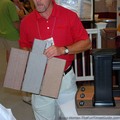 So, as a testament to TimberTech’s customer service, the rep I talked to said he would put me in touch with a local installer who can show me actual decks at actual homes (or put me in touch with homeowners who have installed a TimberTech deck — to get their feedback as to how it has held up with regard to weathering, fading, and scratches).
So, as a testament to TimberTech’s customer service, the rep I talked to said he would put me in touch with a local installer who can show me actual decks at actual homes (or put me in touch with homeowners who have installed a TimberTech deck — to get their feedback as to how it has held up with regard to weathering, fading, and scratches).
This is huge! It’s nearly impossible to see real-life examples of these decks. When you ask composite deck companies for samples, usually all you get is a 2×6 chunk of composite material. And it’s just so difficult to visualize a full-size deck made out of that. Not to mention the fact that it’s important to see how these decks “age” over time.
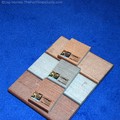 So kudos to TimberTech for stepping up and offering to do that. (I have to say, MoistureShield agreed to do the same thing… I guess it was my lucky day.)
So kudos to TimberTech for stepping up and offering to do that. (I have to say, MoistureShield agreed to do the same thing… I guess it was my lucky day.)
Even one better… when I mentioned that my next biggest concern was the degree to which our 80-lb dog’s toenails (or claws!) would scratch up a TimberTech Earthwood walnut-colored deck, the rep offered to put together some “new” scraps of the walnut Earthwood boards in order to create a square plank that we can put at the bottom of our outdoor steps now. Since our dog uses these steps several times a day, it will be interesting to see how dog traffic will affect the composite decking in terms of scratches, wear & tear. I’ll let you know how that goes…
We’ve gone through the entire process of designing and planning every single detail of our dream log home! We have the blueprints… and the land… and the contractor… and the goal for our log cabin home to be our retirement home. Before you build (or buy) a log home, I have a slew of helpful tips for you — to plan, design, build, decorate, and maintain your very own rustic modern log home. When I’m not fine-tuning the log home of my dreams, you’ll find me at the corner of Good News & Fun Times as publisher of The Fun Times Guide (32 fun & helpful websites). To date, I’ve written nearly 300 articles for current and future log home owners on this site! Many of them have over 50K shares.

